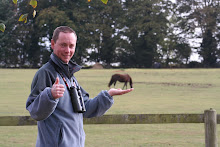The dining area was covered to keep the elements off but the sides were open allowing moths to be attracted to the lights. On our first night, a bat spent most of its time flying round in circles hoovering up many moths. Those that made it onto the walls had to run the gauntlet of a dawn raid by the blue magpies!!
There were a few left for me to photograph although identifying them is proving a little trickier.


Hawkmoth spp


Can't decide if the last two are the different species or just individual variation...

Such cool camouflage

This beauty had a wingspan of over 6 inches!!


Black arches...?





Public enemy #1
You had to be up early to see what moths had been attracted to the lights overnight. If you left it until after dawn, upto 6 Sri Lanka blue magpies would be feasting on the nights catch!!!

Such cool camouflage

This beauty had a wingspan of over 6 inches!!


Black arches...?





Public enemy #1
You had to be up early to see what moths had been attracted to the lights overnight. If you left it until after dawn, upto 6 Sri Lanka blue magpies would be feasting on the nights catch!!!







































